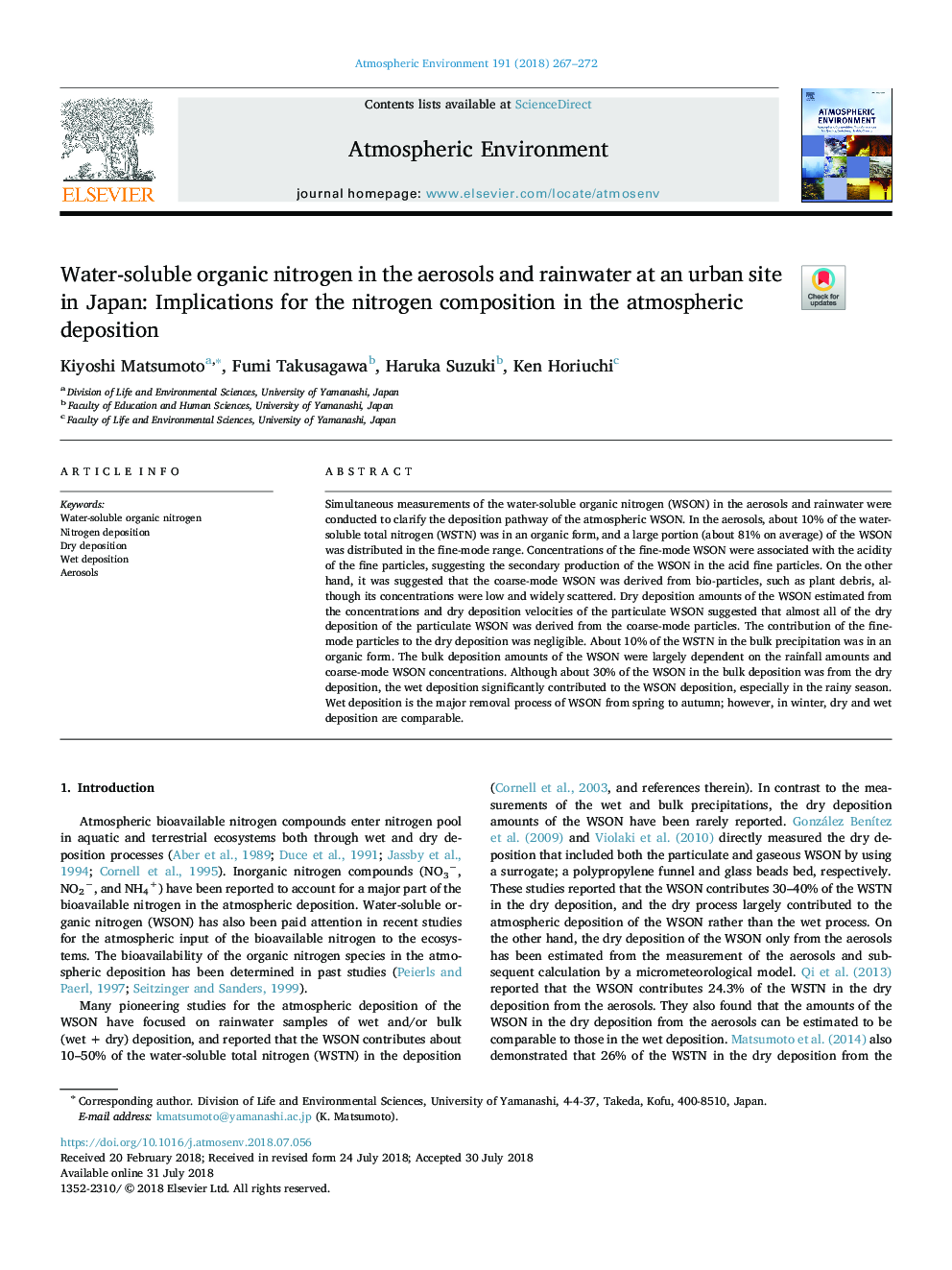| Article ID | Journal | Published Year | Pages | File Type |
|---|---|---|---|---|
| 8863405 | Atmospheric Environment | 2018 | 6 Pages |
Abstract
Simultaneous measurements of the water-soluble organic nitrogen (WSON) in the aerosols and rainwater were conducted to clarify the deposition pathway of the atmospheric WSON. In the aerosols, about 10% of the water-soluble total nitrogen (WSTN) was in an organic form, and a large portion (about 81% on average) of the WSON was distributed in the fine-mode range. Concentrations of the fine-mode WSON were associated with the acidity of the fine particles, suggesting the secondary production of the WSON in the acid fine particles. On the other hand, it was suggested that the coarse-mode WSON was derived from bio-particles, such as plant debris, although its concentrations were low and widely scattered. Dry deposition amounts of the WSON estimated from the concentrations and dry deposition velocities of the particulate WSON suggested that almost all of the dry deposition of the particulate WSON was derived from the coarse-mode particles. The contribution of the fine-mode particles to the dry deposition was negligible. About 10% of the WSTN in the bulk precipitation was in an organic form. The bulk deposition amounts of the WSON were largely dependent on the rainfall amounts and coarse-mode WSON concentrations. Although about 30% of the WSON in the bulk deposition was from the dry deposition, the wet deposition significantly contributed to the WSON deposition, especially in the rainy season. Wet deposition is the major removal process of WSON from spring to autumn; however, in winter, dry and wet deposition are comparable.
Related Topics
Physical Sciences and Engineering
Earth and Planetary Sciences
Atmospheric Science
Authors
Kiyoshi Matsumoto, Fumi Takusagawa, Haruka Suzuki, Ken Horiuchi,
